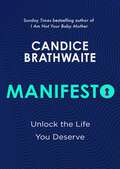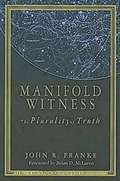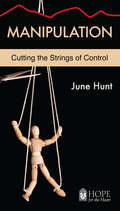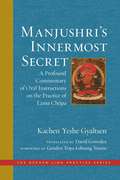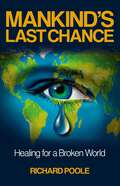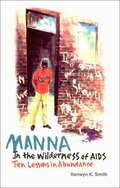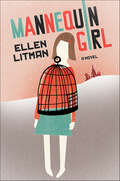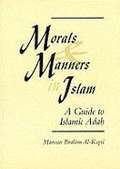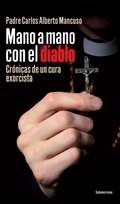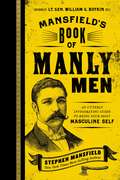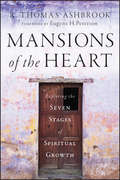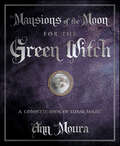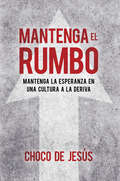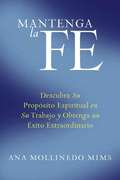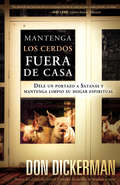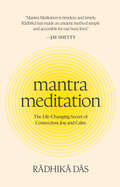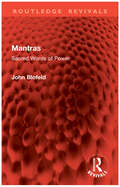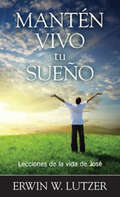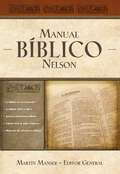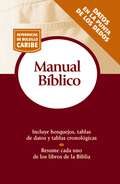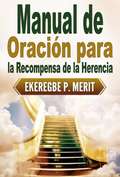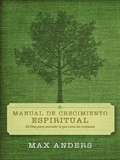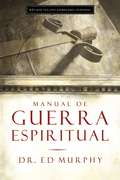- Table View
- List View
Manifesto: Unlock the life you deserve and find contentment in your everyday
by Candice BrathwaiteSunday Times bestselling author and acclaimed speaker Candice Brathwaite shares her revolutionary and inclusive approach to manifesting. Believing that you deserve abundance is the route to inviting it into your life. But what if your experiences so far have demonstrated the exact opposite? What does Manifesting look like if you're not white, thin, traditionally pretty, or able-bodied? Candice has learnt to manifest the hard way and can teach you to do the same. Focusing on the four pillars of Wellness, Wealth, Love and Happiness, Candice's customary no bullsh*t candour will guide you towards the life you desire and show you that manifesting can be for everyone, not just those to whom the universe has already been kind.A game-changing approach to manifesting to help you bring your dreams into reality and find contentment in your everyday.
Manifesto: Unlock the life you deserve and find contentment in your everyday
by Candice BrathwaiteSunday Times bestselling author and acclaimed speaker Candice Brathwaite shares her revolutionary and inclusive approach to manifesting. Believing that you deserve abundance is the route to inviting it into your life. But what if your experiences so far have demonstrated the exact opposite? What does Manifesting look like if you're not white, thin, traditionally pretty, or able-bodied? Candice has learnt to manifest the hard way and can teach you to do the same. Focusing on the four pillars of Wellness, Wealth, Love and Happiness, Candice's customary no bullsh*t candour will guide you towards the life you desire and show you that manifesting can be for everyone, not just those to whom the universe has already been kind.A game-changing approach to manifesting to help you bring your dreams into reality and find contentment in your everyday.
Manifold Witness: The Plurality of Truth
by John R. FrankeIf Christians are part of the one body of Christ, how do we account theologically for the multiple expressions of our common faith? If God is ultimate truth, why is it so difficult to agree on issues related to truth? Must we sacrifice a commitment to truth in favor of a pragmatic unity in the church? Or must we hold on to our perception of the truth at the expense of fracturing the church? For John Franke, truth versus unity is a false dichotomy. In this provocative yet thoughtful book, he argues that orthodox and biblical Christian faith is inherently pluralist, and that this diversity, far from being a problem that needs to be overcome, is in fact a blessing from God and part of the divine design and intention for the church. Suggesting that Christians should affirm the reality of ultimate truth, but cautioning humility regarding our grasp of it, Franke sets forth a relational theology in which the many expressions of revealed truth—Christ, the Holy Spirit, and Scripture, along with a diverse church—together witness to the expansiveness of the one God."John Franke asserts the plurality of truth, not as a capitulation to non- or anti-Christian thought, but rather as an expression of profoundly Christian thought—and specifically, of emergent, missional, and Trinitarian Christian thought. In so doing, he gently implies that the dominant alternative view—that white, modernist, Western Christian scholars and institutions have a monopoly on truth—is actually a capitulation to modes of thought and power that have betrayed the life and gospel of Jesus Christ." —From the foreword by Brian McLaren "A refreshing study of plurality and diversity as something intrinsic to the nature of Christianity rather than as something extraneous to it. Lucid and lively, the book makes a valuable contribution to the ongoing discussion about the religion’s emerging profile in the twenty-first century. I am entirely in agreement with John Franke that faith is embodied, that theology is rooted in practice and experience, and that the gospel shapes and is shaped by culture. Manifold Witness tracks the manifold trails of Christianity’s impact on persons and societies. It should find welcome response in theological study and teaching." —Lamin Sanneh, Professor of World Christianity and Director, World Christianity Initiative, at Yale Divinity School, Professor of History at Yale University, and author of Translating the Message: The Missionary Impact on Culture and Disciples of All Nations: Pillars of World Christianity "Why is there a Trinity of persons and a quartet of Gospels? Do not relation and difference, context and plurality lie at the very heart of the Christian tradition? Is not the infinite resourcefulness of love enhanced by change and alterity? These are the kinds of questions that John Franke addresses in a bold, sweeping, and lucid presentation of the ongoing renewal of the life of the church. Manifold Witness is the fruit of a tenacious faith in the Christian tradition and a no-less-tenacious faith in the power of truth." —John D. Caputo, Thomas J. Watson Professor of Religion and Humanities at Syracuse University and author of What Would Jesus Deconstruct? The Good News of Postmodernism for the Church "John Franke’s Manifold Witness is the most Reformed book I have ever read. Why? It is the first I have read that not only believes the human mind has been impacted by the Fall but also that carries this through into how the Bible makes truth claims. We need manifold witnesses because, as humans, no one author can grasp the whole Story. If it takes a village to nurture a child, it takes the manifold voices of the Bible and the church to nurture the church. Boldness, braced up by humility, marks every page of this book." —Scot McKnight, Karl A. Olsson Professor in Religious Studies, North Park University and author of A Community Called Atonement "With clarity, grace, and practical insight, John Franke argues convincingly that the plurality of witnesses in Christian tradition is not a hindran
Manipulation: Cutting The Strings Of Control (Hope for the Heart)
by June HuntManipulation--Cutting the Strings of ControlManipulation is the Number One guilt game played by narcissistic, controlling people. This means manipulative and controlling people try to make you feel guilty to get their own way, regardless of what's good for you. They'll accuse you of insensitivity or disloyalty or a lack of Christian kindness, in order to pressure you into giving your time, your money, or even yourself into doing what they want--even though you are not being led by the Lord to do so. In this mini-book on manipulation, you will learn what tactics are used by controlling people, why you have been manipulated, and how to stop being manipulated. In other words, this Hope for the Heart mini-book, Manipulation, gives Christians the confidence to say no to people so they can say yes to God.Did you know that there are several verbal and non-verbal types of manipulation? Spiritual manipulation is not often talked about, but very present in the Bible, and is very common today. Learn all 16 types of manipulation, and how manipulators use words, seductive gestures, power, and spite to get what they want. June Hunt gives you practical advice on:• The first 4 steps away from manipulation • How to discover your own manipulative maneuvers • 9 ways to say "No" to manipulators • How to answer common questions on manipulation • And much more. To stop being manipulated, you must sometimes say no to people so you can say yes to God. Manipulative traits are often passed on from generation to generation, but you have the power to stop the abuse and start the healing. Manipulation and deceit started all the way back in the garden of Eden when Satan convinced Adam and Eve to sin. The root cause is our own selfish desires, but they can be stopped with God's help, and you can walk once again on the path to wholeness.
Manjushri's Innermost Secret: A Profound Commentary of Oral Instructions on the Practice of Lama Chöpa (The Dechen Ling Practice Series #1)
by Ganden Tripa Lobsang TenzinThe only English translation of a text key to the Gelug lineage (the Buddhist lineage of the Dalai Lama).Discover the entire path to enlightenment as taught by the wisdom-buddha Manjushri. A Treasury of Oral Instructions from the Hearing Lineage Revealing the Innermost Secret, Kachen Yeshe Gyaltsen’s commentary on the First Panchen Lama’s liturgical text, Lama Chöpa, stands as one of the great literary contributions to the Gelug Hearing Lineage. Written at the behest of the Third Panchen Lama, Palden Yeshe, this astonishing text reveals a treasury of closely guarded oral instructions. Highly informative and deeply moving, Manjushri’s Innermost Secret contains the entire path to enlightenment that was transmitted in direct communication with Lama Tsongkhapa by the wisdom-buddha Manjushri. This invaluable commentary provides an authoritative illumination of the Lama Chöpa ritual text for practitioners and is widely revered and commented upon in its own right. Designed for those who have received the highest yoga tantra empowerment, these texts swiftly guide the spiritual practitioner to the state of complete enlightenment through the full spectrum of teachings on the lamrim and mind training (lojong). It also covers the generation and completion stages of highest yoga tantra, all of which are grounded in deep, heartfelt faith and devotion for one’s spiritual guide. In addition to the Lama Chöpa ritual text itself, this book also includes the First Panchen Lama’s root text on Ganden Mahamudra, the supplication verses to the lineage gurus, and the Fifty Verses of Guru Devotion composed by the Indian saint Ashvagosha. ___ Previously published as Manjusri's Innermost Secret by Dechen Ling Press.
Mankind's Last Chance: Healing for a Broken World
by Richard PooleDrawing extensively on his experiences of more than thirty years as a humanitarian worker, Richard Poole takes us on a journey from our earliest origins to our present day, one that enables us to see how far we have strayed from our guiding principles to create a world that is bent on self-destruction. Mankind's Last Chance argues that the repair of our broken societies, our collapsing economies and our wrecked environment lies not in the application of any new form of political and economic governance but in a moral re-awakening and a renewed commitment to the common good that can only come from a spiriitual transformation on a universal scale. More importantly it tells us where the source of such a transformation is to be found and how it can be achieved.
Manna in a Wilderness of Aids: Ten Lessons in Abundance
by Kenwyn K. SmithThis is a poignant story of how a tenacious group of seven individuals from a Philadelphia church transformed a modest initiative to serve food to those with HIV/AIDS into a vibrant, interfaith nonprofit organization called Manna (Metropolitan AIDS Neighborhood Nutrition Alliance) -- and in the process, revitalized their community, themselves, and their church. <p><p>The book describes ten life-giving lessons they experienced during Manna's early years. These universal lessons include: -- The greatest insights came from the most vulnerable in our midst-- The leaps of faith we took filled our spirits with vitality-- To thrive in the midst of massive turbulence required deep roots and radical shifts carefully timed-- Manna both sharpened and healed the tensions between race and social class-- The miraculous was contained within the mundane The book depicts how Manna overcame tremendous obstacles -- namely, fear and ignorance of AIDS and a lack of funding to accomplish benevolent goodness.
Manna: When You're Out of Options, God Will Provide
by Steve FarrarSometimes the wilderness is the only place God can get your undivided attention. Everyone finds himself or herself in a wilderness at some point: financial wildernesses, emotional wildernesses, relational wildernesses, health wildernesses, reputation wildernesses, failure wildernesses, unemployment wildernesses--the list goes on and on. In those moments, we are utterly dependent on God for well-timed help. If he doesn't come through, we're finished. For forty years, two million Israelites were in the wilderness, and God fed them supernaturally every morning with manna, teaching people who doubted him he can be trusted with everything they needed to survive. This is a lesson we need to learn too. In personal stories and applications of biblical lessons, Manna reveals how God specializes in making a way where there is no way. He proved it every day to the nation of Israel, never missing a day of being faithful. He was never late, and he was never early. He was always just in time. And he will be for you.
Mannequin Girl: A Novel
by Ellen LitmanA heartfelt and deftly told coming-of-age story, Mannequin Girl captures the bleakness of Soviet Russia and the hopeful turmoil of adolescence."A perfect little figure," he says. "Our mannequin girl." She knows who mannequin girls are. They are in her grandmother's Working Woman magazines, modeling flouncy dresses and berets. "Bend," he tells her, and she does, so pliant, so obedient."Growing up in Soviet Russia, Kat Knopman worships her parents, temperamental Anechka and soft-hearted, absent-minded Misha. Young Jewish intellectuals, they teach literature at a Moscow school, run a drama club, and dabble in political radicalism. Kat sees herself as their heir and ally. But when she's diagnosed with rapidly-progressing scoliosis, the trajectory of her life changes and she finds herself at a different institution—a school-sanatorium for children with spinal ailments. Confined to a brace, surrounded by unsympathetic peers, Kat embarks on a quest to prove that she can be as exceptional as her parents: a beauty, an intellect, and free spirit despite her physical limitations, her Jewishness, and her suspicion that her beloved parents are in fact flawed. Can a girl with a crooked spine really be a mannequin girl, her parents’ pride and her doctors’ and teachers’ glory? Or will she prove to be something far more ordinary—and, thereby, more her own? An unforgettable heroine, Kat will have to find the courage to face the world and break free not only of her metal brace but of all the constraints that bind her.
Mano a mano con el diablo: Crónicas de un cura exorcista
by Carlos MancusoEl testimonio de un cura que practicó exorcismos con autorización de laIglesia católica durante más de treinta años. «Soy un cura exorcista. Enfrento con frecuencia al diablo y lo conmino aabandonar esos cuerpos que decidió poseer. Lucho contra el demonio. Esuna tarea muy pesada, que representa un esfuerzo que supera los límitesconocidos como "humanamente posibles". Es el combate de un humano contralas fortalezas más antiguas del Universo. La mía, queda claro, no es unaactividad sencilla».¿Cómo se reconoce a un endemoniado? ¿Por qué el diablo elige adeterminadas personas como sus víctimas? ¿Cómo se lleva a cabo estapráctica que los exorcistas ortodoxos realizan desde hace quinientosaños?El Padre Carlos Mancuso es una persona común y corriente con unaocupación extraordinaria: está autorizado por la Iglesia Católica parapracticar exorcismos. Cada vez son más las personas que lo consultanconsternadas por situaciones extrañas que los tienen como protagonistas.Acostumbrado a ser un referente en la materia, lo convocan de distintospaíses del mundo tanto para realizar su praxis como para dar seminariosdentro y fuera del ámbito eclesiástico.
Mansfield's Book of Manly Men: An Utterly Invigorating Guide to Being Your Most Masculine Self
by Stephen MansfieldWitty, compelling, and shrewd, Mansfield&’s Book of Manly Men is about resurrecting your inborn, timeless, essential, masculine self.The Western world is in a crisis of discarded honor, dubious integrity, and faux manliness. It is time to recover what we have lost. Stephen Mansfield shows us the way. Working with timeless maxims and stirring examples of manhood from ages past, Mansfield issues a trumpet call of manliness fit for our times. In Mansfield&’s Book of Manly Men, you&’ll see that:This book is about doing. It is about action.It is about knowing the deeds that comprise manhood and doing those deeds.Habits have to be formed, and actions have to be aligned with the grace received.&“My goal in this book is simple,&” Mansfield says. &“I want to identify what a genuine man does?the virtues, the habits, the disciplines, the duties, the actions of true manhood?and then call men to do it.&”
Mansions of the Heart
by R. Thomas AshbrookA practical program for developing a deeper, more authentic relationship with GodWritten for anyone who wants to develop a deeper more meaningful relationship with God, Mansions of the Heart offers a step-by-step guide through a spiritual formation road map based on Teresa of Avila's Seven Mansions. The book includes a Mapping Tool that will help you discern your place on your spiritual journey and offers church leaders a process for helping church members to grow into spiritual maturity.Contains a spiritual program based on the writings of Teresa of Avila, one of Christianity's most profound and beloved mystical teachers Offers a complete, step-by-step program for spiritual growthIncludes information for leading others in their spiritual journeysAppropriate for all kinds of Christians <P><P><i>Advisory: Bookshare has learned that this book offers only partial accessibility. We have kept it in the collection because it is useful for some of our members. Benetech is actively working on projects to improve accessibility issues such as these.</i>
Mansions of the Moon for the Green Witch: A Complete Book of Lunar Magic (Green Witchcraft Series)
by Ann MouraAnn Moura, the author of the popular Green Witchcraft series, is back with a new, one-of-a-kind spellbook on lunar magic. This is the only guidebook available that uses Mansions of the Moon correspondences to empower Esbat rituals and spellwork.The moon goes through twenty-eight distinct "mansions," or sections of the sky, as it travels through the twelve signs of the zodiac. Each mansion is appropriate for certain types of magic, as described in ceremonial magic books, such as Agrippa's Three Books of Occult Philosophy or Barrett's The Magus. Now this esoteric information is available to Witches, complete with suggested workings for both the waxing and the waning lunar phase in each mansion.Moura provides the tools, the instruction, and examples of how to utilize the Mansions of the Moon to add depth and potency to your spells and rituals. More than one hundred workings are presented, including candle spells, charm bags, meditations, magical oils, talismans, amulets, incense, teas, and much more.
Mantenga el rumbo / Stay the Course: Mantenga la esperanza en una cultura a la deriva
by Wilfredo De JesúsSi siente que la cultura está cambiando justamente debajo de sus pies y es incapaz de volver de nuevo sobre la marcha, USTED NO ESTA SOLO... Muchos de nosotros vemos las poderosas corrientes subterráneas de la historia que están teniendo lugar frente a nuestros ojos y, ante ello, como respuesta, algunas personas se hunden en la angustia mientras que otras luchan desesperadamente por mantenerse firmes en su fe. Sí, la cultura está a la deriva, pero la presencia, la verdad, la gracia y el poder de Dios no han cambiado en absoluto. El es tan real, tan fuerte y tan amoroso como siempre lo ha sido. Incluso en épocas aterradoras, podemos aprender a estar enfocados en la dirección de Dios para nuestras vidas. El es el 'verdadero norte', y Él nos guiará. El pastor 'Choco' De Jesús ofrece una esperanza real y soluciones prácticas. Él identifica claramante las presiones de la cultura, reconoce nuestra tendencia humana de ir a la deriva y proporciona el estímulo bíblico de 'mantener el rumbo' en nuestro caminar con Dios. Combinando historias poderosas con una agudeza y percepción sorprendentes y sólidos principios bíblicos, el pastor 'Choco' nos da la mano, no solo para redescubrir el camino de Dios, sino para recorrerlo a través de los buenos y los malos tiempos, y nos ayuda a estar siempre cerca de nuestro Padre celestial. Practical guidance for Christians on being truth and light in a world that increasingly views biblical truth as intolerance and hate. Many people today are afraid and angry. The ground under them is shifting, and they feel powerless to do anything about it. Some look at the massive cultural changes, and they shrug. That's no big deal. In fact, we need to keep in step with the culture. Go along to get along. Others have an opposite reaction: they fight back in an impassioned, shrill voice that alienates those who disagree with them. Still others withdraw from the contentious arguments because they assume, What's the use? My voice means nothing. But there's another path--to engage the people and the problems in our culture with a blend of humility and strength. The paradox of faith is that the deeper we go into the deep waters of the tenderness, love, and grace of God--the fact that the king of glory loved us enough to become a servant to pay for our sins and make us his own--he increasingly puts steel in our souls so we can engage the difficult issues in our culture with wisdom, kindness, and courage. Like the culture, we tend to drift--toward disillusionment or self-sufficiency. We need God's grace and truth to penetrate deep into our hearts, and we need each other, to stay the course. In our culture, "people truth " are often seen as judgmental and intolerant (and these labels may indeed fit), but Pastor Choco is known for his compassion as well as his unswerving commitment to truth. Stories from his life and his church will be woven throughout this book.Each chapter includes questions to stimulate personal reflection and group discussion.A group leader's guide is included in the appendix
Mantenga la Fe
by Ana Mollinedo MimsDe una voz clara y poderosa nos llega un libro que le da sentido a la vida laboral, y le recuerda a los creyentes que el propósito espiritual lleva al éxito profesional La clave en la realización profesional de Ana Mollinedo Mims ha sido su filosofía basada en la fe que ella cree es lo fundamental para encontrar sentido, y luego éxito, en todo aspecto de su vida profesional. Los principios que Ana desarrolla en este libro-la fe, la integridad, la humildad, la oración, el perdón, la administración y el legado-son conceptos que la han llevado lejos en su muy distinguida carrera profesional. Son los principios que forman la raíz de una carrera basada en lo espiritual, una carrera que ella cree está al alcance de toda persona que quiera darle un propósito a uno de los aspectos de nuestras vidas que ocupa la mayor cantidad de nuestro tiempo: el trabajo. Mantenga la Fe observa algunas de las dificultades comunes que todo el mundo debe enfrentar en diferentes etapas de sus vidas laborales. Utilizando sus propias experiencias y la de otros, Ana nos muestra que cuando los problemas y las dudas se manejan con su pragmatismo espiritual, cada dificultad se transforma en una oportunidad para que crezca el propósito espiritual de cada quien, lo cual, a su vez, nos acerca al éxito profesional. Ana cree que con cada paso las respuestas se aclararán más; serán aun más gratificantes al lograr cambiar la perspectiva y considerar lo que en realidad significa la combinación entre la vida laboral y la vida devotamente espiritual.
Mantenga los cerdos fuera de casa
by Don DickermanEste libro le muestra a los creyentes lo que deben saber para mantenerse libre de la opresión demoníaca. Los que leyeron el primer libro de Dickerman, Cuando los cerdos se mudan a casa,--sobre cómo deshacerse de la opresión demoníaca--desearán darle seguimiento al tema con este práctico libro que resume cómo mantenerse libre de las artimañas de Satanás. El autor combina principios bíblicos prácticos con poderosas historias de personas que han sido liberadas de la opresión demoníaca, y que han aprendido a librar con éxito la guerra espiritual contra Satanás y sus fuerzas demoníacas. Este libro trata sobre conocer nuestras limitaciones. No tiene la intención de ofender o criticar a aquellos que promueven esta forma de pensar, sino de ayudar a los creyentes a mantenerse libres y no abrirle las puertas a los poderes del demonio.
Mantra Meditation: The Life-Changing Secret of Connection, Joy, and Calm
by Radhika DasChanting is more than just words. In Mantra Meditation, renowned kirtan artist Radhika Das introduces us to the world of modern chanting and reveals its profound origins, showing us that we do not need to be a good singer, a yoga practitioner, or a follower of any religion or set of beliefs to experience the extraordinary power of mantra. This book will guide you through relevant and accessible Vedic chants that can be practiced in solitude or with community and explores how you can integrate these powerful tools in your everyday life. Through the repetition of these sacred syllables, you&’ll tap into a state of joy, clarity, and boundless love. Featuring practical exercises like simple postures, breathing techniques, and meditations, Mantra Meditation will empower you to begin your mantra journey so you can unlock a true sense of inner peace and cultivate authentic spiritual growth.
Mantras: Sacred Words of Power (Routledge Revivals)
by John BlofeldFirst published in 1977, in this unique and beautifully illustrated book called Mantras, John Blofeld, an acknowledged authority on Buddhist yogic contemplation, explains the significance and operation of the sacred ‘words of power’. With the dramatic growth of interest in the religions and mysticism of the East, more and more people have become fascinated by ‘mantras’, the sacred formulae memorised for meditation in India, China and Tibet. Their precise meaning and exactly how they work have, understandably, long been surrounded by an aura of secrecy in order to guard against distortion and abuse. Meditators chant them sonorously and rhythmically or repeat them inwardly, and often visualise the syllables as emanating rays of gloriously coloured light. The efficacy of mantras as an aid to meditation is beyond doubt- but many people believe that the syllables themselves are imbued with marvellous or miraculous powers.John Blofeld explores these more controversial aspects with great insight and sensitivity. Much of his knowledge is derived from first-hand experience and from lips of monks and lamas encountered during a lifetime in the East. This is an interesting read for scholars and researchers of religion, Buddhism, and Hinduism.
Mantén vivo tu sueño: Lecciones de la vida de José
by Erwin W. LutzerAtravés de este interesante estudio de la vida de José, el autor Erwin W. Lutzer muestra a los cristianos de hoy cómo pueden... * aceptar su sueño como dado por Dios y lleno de fe * entender cómo un sueño puede ser destruido por el pecado * fortalecer su sueño y vivirlo * manejar las pruebas y dificultades que surjan a lo largo del camino Este recurso inspirador anima a los creyentes a buscar la guía y dirección de Dios a fin de mantener vivo su sueño. Through this engaging study of the life of Joseph, author Erwin W. Lutzer shows today's Christians how to: * embrace their dream as God-given and faith-filled * understand how a dream can be shattered by sin * nurture their dream and live it out * handle the tests and trials along the way This inspiring resource encourages believers to look to God for guidance and direction to keep their dream alive.
Manual Bíblico Nelson: Tu guía completa de la Biblia
by Martin ManserIdeal para Descubrir... Entender... AplicarEsta guía de la Biblia está cuidadosamente diseñada para ayudar al lector a descubrir el contenido, entender las verdades y aplicar el mensaje de la Biblia. Los libros bíblicos están claramente explicados a través de secciones que incluyen introducción histórica, resúmenes libro por libro, y referencias para encontrar lugares y personas clave en la Biblia. Muchos estudios profundizan en las diez verdades esenciales de la fe y ayudan a los lectores a aplicar las nueve áreas de la vivencia cristiana. Basado en los estudios más recientes, el Manual Bíblico Nelson está diseñado para grupos, individuos y maestros. Su clara estructura y contenido, combinados con su atractivo diseño a todo color, hacen del Manual Bíblico Nelson la más accesible y completa guía de la Biblia en el mercado.
Manual bíblico: Serie Referencias de bolsillo
by Thomas NelsonIncluye bosquejos, tablas de datos y tablas cronológicas y resume cada uno de los libros de la Biblia. Ideal para todo estudiante de la Biblia.
Manual de Oración para la Recompensa de la Herencia
by Ekeregbe P. MeritEl manual de oración trata del paquete de recuperación total revelado por la "Recompensa de la Herencia" a la que tiene derecho quien ha aceptado a Jesús. Esta recuperación se basa en la salvación y su revelación. Uno podría ser salvado y aún estar bajo yugo, excepto que la salvación viene con la revelación divina. La luz de la revelación es lo que impulsa la guerra para recuperar la herencia. La herencia es voluminosa, y un stock en el comercio y sólo aquellos que tienen acceso a la gracia de la salvación pueden disfrutar de la misma. Está disponible para cualquier persona que elija comprarla. La moneda es una cápsula de salvación, conocimiento y la pasión por la herencia o el impulso de la reclamación. El conocimiento y la revelación que tienes a través del libro "La Recompensa de la Herencia" es la propulsión para declarar tu victoria a través de las acciones de oración de este manual. "Y les dijo una parábola con este fin, para que los hombres oren siempre, y no desmayen" (Lucas 18: 1). La oración es un trabajo duro y requiere energía. La revelación que la palabra provee debe ser un refuerzo para el reclamo de la herencia. Este impulso no produce ningún resultado excepto que se convierte en oración por la herencia. Este manual de oración detalla las demandas de oración, aunque no agotadas, para una persecución y recaptura de la vida de la herencia como los beneficios que caen con el conocimiento si las oraciones son dichas como empujadas por el Espíritu Santo. La experiencia del Espíritu Santo no puede recaer sobre ningún deseador de la herencia, excepto que uno sea salvo. La oración es un arma fiable para hacerse cargo del legado perdido.
Manual de crecimiento espiritual
by Max AndersLos primeros treinta días de la travesía espiritual de un nuevo creyente son los más importantes de su nueva vida en Cristo.En este volumen actualizado de su popular colección «30 días», el Dr. Max Anders presenta las verdades esenciales del cristianismo en el estilo claro y coloquial que sus lectores esperan de él. Manual de crecimiento espiritual ofrece un panorama completo de las principales doctrinas y creencias cristianas ¡en apenas 15 minutos al día!Mediante el uso de ejemplos memorables y un vocabulario sencillo, el Dr. Anders explica los diez temas más importantes de la teología sistemática: la Biblia, Dios, Jesús, el Espíritu Santo, los ángeles, el hombre, el pecado, la salvación, la Iglesia y el futuro. Esta autoguía de estudio puede adaptarse fácilmente para grupos de estudio de la Biblia y clases en la iglesia. Los estudiantes crearán una base de verdades que mejorará su caminata con Cristo y servirá de punto de partida para una investigación más profunda de la doctrina bíblica.
Manual de guerra espiritual
by Dr Ed MurphyEl más amplio, completo y práctico manual de guerra espiritual. Una herramienta esencial para entender efectivamente las tres dimensiones de la guerra espiritual, y a la vez participar en ella definitivamente para lograr la victoria en Jesucristo.
